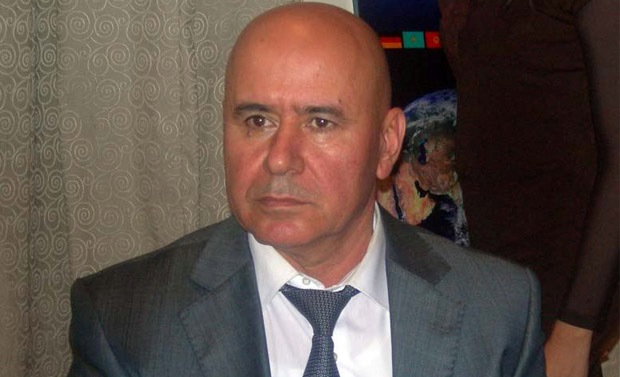
Tajikistan Launches Military Operation in Remote Pamirs Region
Publication: Eurasia Daily Monitor Volume: 9 Issue: 143
By:

On July 24, Tajikistan’s government launched a military operation against an illegal armed group led by border-police commander Tolib Ayombekov, a former Islamist rebel whom authorities have accused of drug smuggling and brutal crimes. Tajikistani helicopter gunships involved in the operation strafed Khorog, the capital of the Gorno-Badakhshan Autonomous Province (located in the mountainous remote region of Pamirs in southeastern Tajikistan). Twelve government personnel were killed and 23 injured in the day’s fighting, said Nozir Buriyev, the spokesman for Tajikistan’s State Committee for National Security. Government forces detained 40 rebels, including eight Afghan citizens, and killed 30 others, he said, adding that there have been no civilian casualties (Nezavisimaya Gazeta, July 26).
However, according to Mukim Maibaliev, the president of the Russian cultural foundation “Pamir,” up to around 150 people were killed: 35-40 government soldiers, 30-40 local fighters and 50-60 civilians. The Tajikistani news reports, citing security officials, said that amidst the attack, Ayombekov fled to Afghanistan (Fergananews.com, Nezavisimaya Gazeta, July 26).
The current crisis precipitated on July 21 when General Abdullo Nazarov, the National Security Committee chief for Gorno-Badakhshan, was ambushed and killed as he was returning to Khorog from the Ishkoshim district located along the border with Afghanistan. Tajikistan’s central government blamed the killing on Ayombekov – a former supporter of Islamist rebels who became Ishkoshim’s border-police commander (Nezavisimaya Gazeta, July 25).
The Gorno-Badakhshan (“Kuhistoni Badakhshon” in Tajik) Autonomous Province is a special region of Tajikistan. Located in the Pamir Mountains, it makes up 45 percent of the land area of the country but only 3 percent (218,000) of the population (Population of the Republic of Tajikistan as of 1 January 2008, State Statistical Committee, Dushanbe, 2008). Pamiri ethnic groups essentially differ from Tajiks. There are several dialects of the Pamir language and almost all Pamiri people adhere to the Ismaili sect of Shia Islam. Pamiri people are not strong believers and in particular, there are no Islamic radicals among them. The Pamiris have close linguistic, cultural and religious ties with the people in the Badakhshan Province of Afghanistan.
During the civil war in Tajikistan (1992-1997), the Pamiris supported the opposition. But due to the remoteness and inaccessibility of the Pamirs (the region is connected with other parts of Tajikistan by just one road), the government troops could not reach Gorno-Badakhshan. So, the July 24 military raid on Khorog is essentially the first instance of violent conflict reaching the Pamirs during the post-Soviet era.
Many experts on Tajikistan are of the opinion that the murder of General Nazarov was not politically motivated but is clearly a criminal case. Moreover, these experts believe that Abdullo Nazarov and Tolib Ayombekov actually were competitors in drug smuggling (Fergananews.com, July 25). However, there is a danger that this criminal conflict might transform into an interregional confrontation. General Abdullo Nazarov was a Sunni Muslim from Khatlon province (located in southern Tajikistan), and Tolib Ayombekov is a Pamiri Ismaili.
Tolib Ayombekov is the younger brother of the famous Pamiri warlord and drug dealer Abdulamon Ayombekov, better known as “Alyosha the Hunchback,” who was killed in 1994. The author first met Alyosha the Hunchback in 1993, while reporting on the Tajikistani Civil War. Abdulamon’s height was not more than 160 centimeters (5 feet, 3 inches), with a huge bump on his back. And even though he physically looked disabled, all Pamiri militants unquestionably obeyed him. During a private conversation with the author, Abdulamon Ayombekov did not deny his involvement in drug smuggling, but he claimed that his main goal was to prevent government troops – consisting of natives from the Kulyab region (southwestern Tajikistan) – from entering the Pamir territories. “If Kuliabis invade the Pamirs, they will start ethnic cleansing. My task is not to let them do this,” Abdulamon told the author.
The danger of ethnic cleansing in the Pamir region is still somewhat high. And as “Nezavisimaya Gazeta” recently noted, Tajikistani authorities have used Nazarov’s murder as an excuse to cleanse the Pamirs of former field commanders from the Tajikistani opposition. According to the newspaper, rumors of an expected special operation in the Pamirs against the remaining so-called opposition groups (the participants of the fight against the government during the Civil War) first appeared on July 3. On that date, the Defense Ministry of Tajikistan began the “Hafiz-2012” military exercises in a neighborhood of Khorog (Nezavisimaya Gazeta, July 25).
Since Gorno-Badakhshan is connected with the other parts of Tajikistan by only one road passing through the remote hard-to-reach mountainous region, Pamiri fighters can easily block it and cut off the area from the rest of the country. The situation is also complicated by the fact that the militants may seek help from Afghan Ismailis. According to the Ferghana news agency, groups of about 200 fighters on the Afghan side of the mountainous Badakhshan region are ready to help their co-religionists in the Tajikistani Pamir (Ferghananews.com, July 25).
On July 26, Tajikistan’s President Emomalii Rahmon met with Interior Minister of Afghanistan Bismillohonom Mohammadi and Rahmatullo Nabil, the head of the National Security Service of the Islamic Republic of Afghanistan. The heads of the Afghan security agencies told Rahmon that border control would be strengthened, and additional military forces will be moved to the Tajikistani-Afghani border region. The day before, Rahmon also discussed this matter with his Afghan counterpart, Hamid Karzai (Interfax, July 26).
However, these measures raise some skepticism. The author repeatedly visited the Pamir Mountain region in the period from 1991 to 2008, and he can testify that even when guarded by the Russian border patrol the Pamir border remained practically open. After the Russian troops were replaced by the Tajikistani border control, the situation only worsened. The Afghan-Tajikistani border does not have special hindrance devices; border posts are located tens of kilometers from each other; and the Panj River in the border area of the Ishkoshim district can be easily forded.
However, many Tajik experts do not believe that a real large-scale war will begin in the Pamirs. “Most [panicked-sounding] articles about the situation in Pamir were published by the Russian media. Now, the Kremlin and Dushanbe are discussing the future of Russian military bases in Tajikistan [they are close to striking a final deal]; and for Moscow, it is profitable to make Emomalii Rahmon scared. The President of Tajikistan is planning to visit Khorog in August. He will take a lot of money and gifts. He should be able to make an agreement with the Pamiri elite [and put this crisis behind him]. And as to small military groups, they will be destroyed without hesitation,” the famous Tajik political scientist and journalist Hairullo Mirsaidov told Jamestown on July 25.




